Science Experiments How-Tos

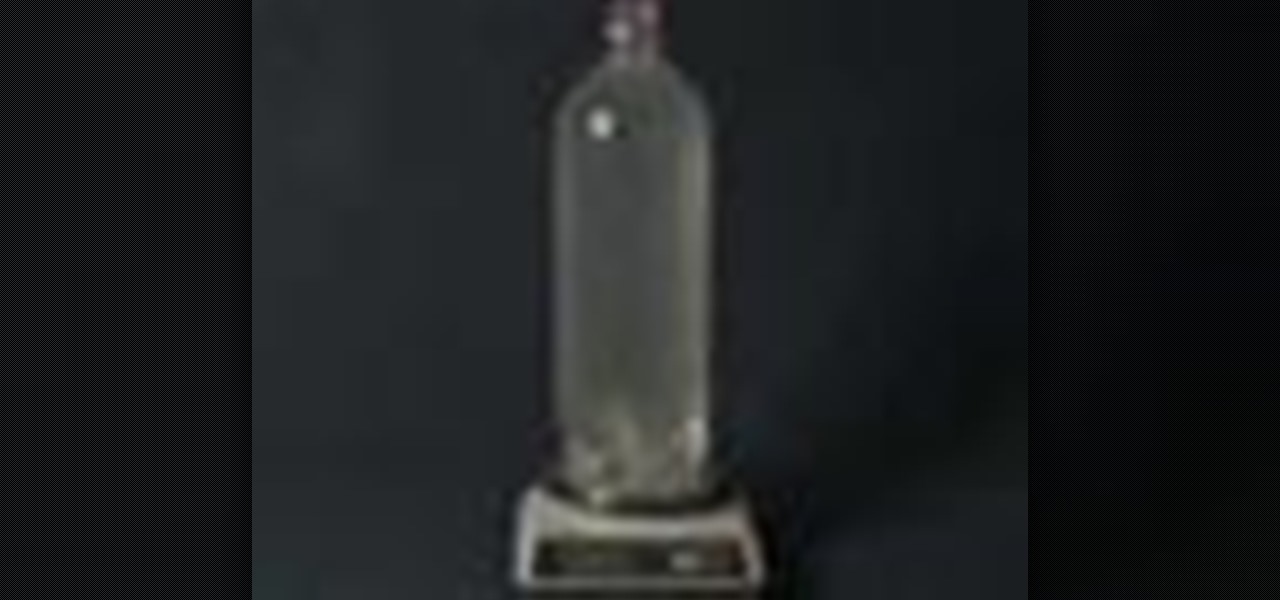
How To: Determine the density of salt water
Everyone floats in the Dead Sea because the amount of salt in water effects the density. Do a hands-on experiment and practice checking density. Here’s a good science experiment to do in class or at home, if you have access to an electronic balance.
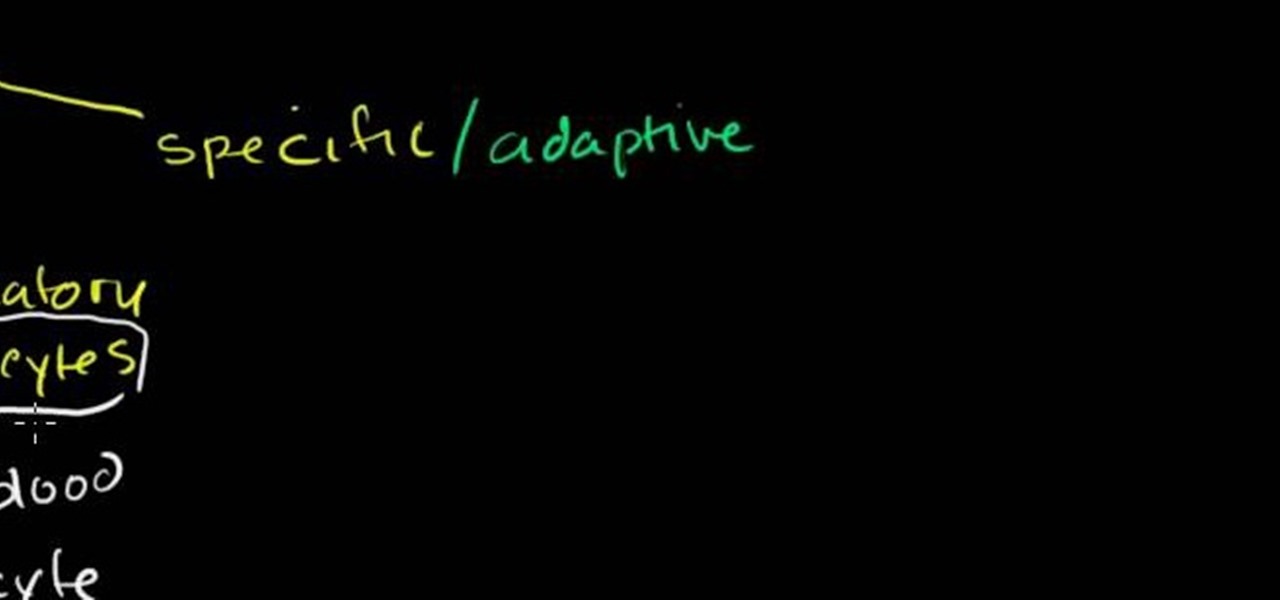
How To: Understand different immune system responses
This is a presentation of different types of immune responses in human body. There are two types of immune systems i.e., non specific and specific or adaptive immune system. Again, non specific immune system is sub- divided into barriers. It is the first line of defense. The second line of defense is the inflammatory response. They are phagocytes. These are all products of white blood cells. It is also called as leukocytes. Lymphocytes are another type of white blood cells which are carriers ...
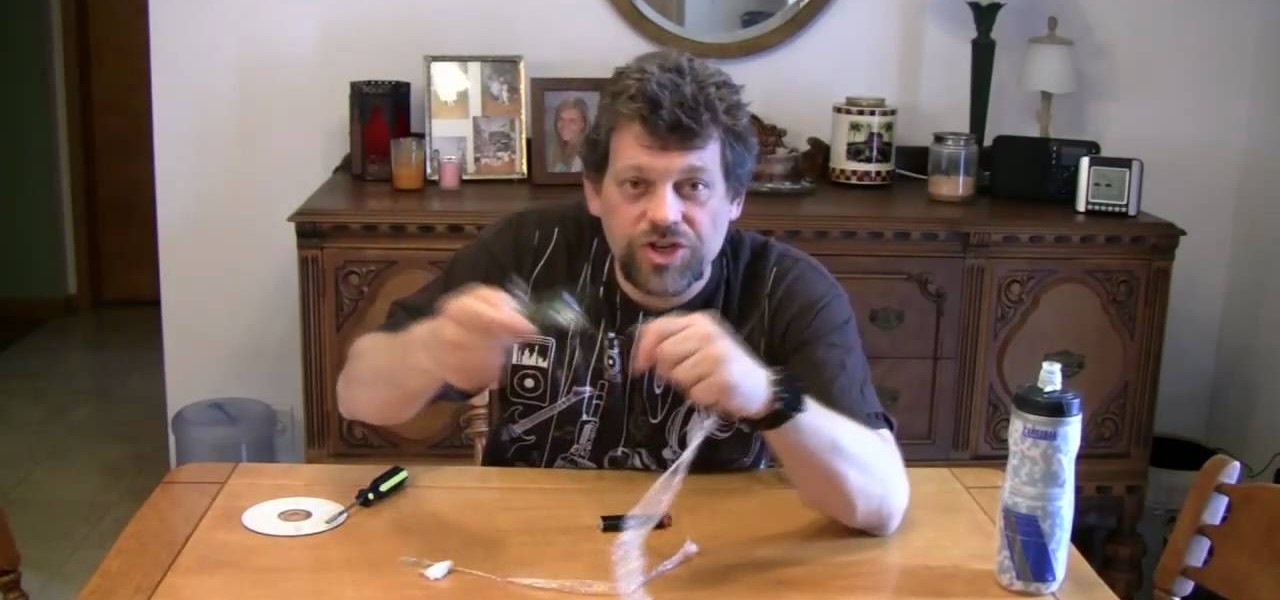
How To: Make bubbles from a CD
Mr. G teaches us how to make bubbles from a CD in this episode of "Do Try This at Home". You will need: a CD, screwdriver, and lighter or candle. Procedure: Use the screwdriver to scrape the aluminum coating from the CD until you get a clear plastic (polycarbonate). Heat an area underneath the CD slowly until the plastic is melted. Blow on the heated portion of the CD until you get a bubble. You may detach the bubble or leave the it on the CD. Heat and blow other portions of the CD to get new...
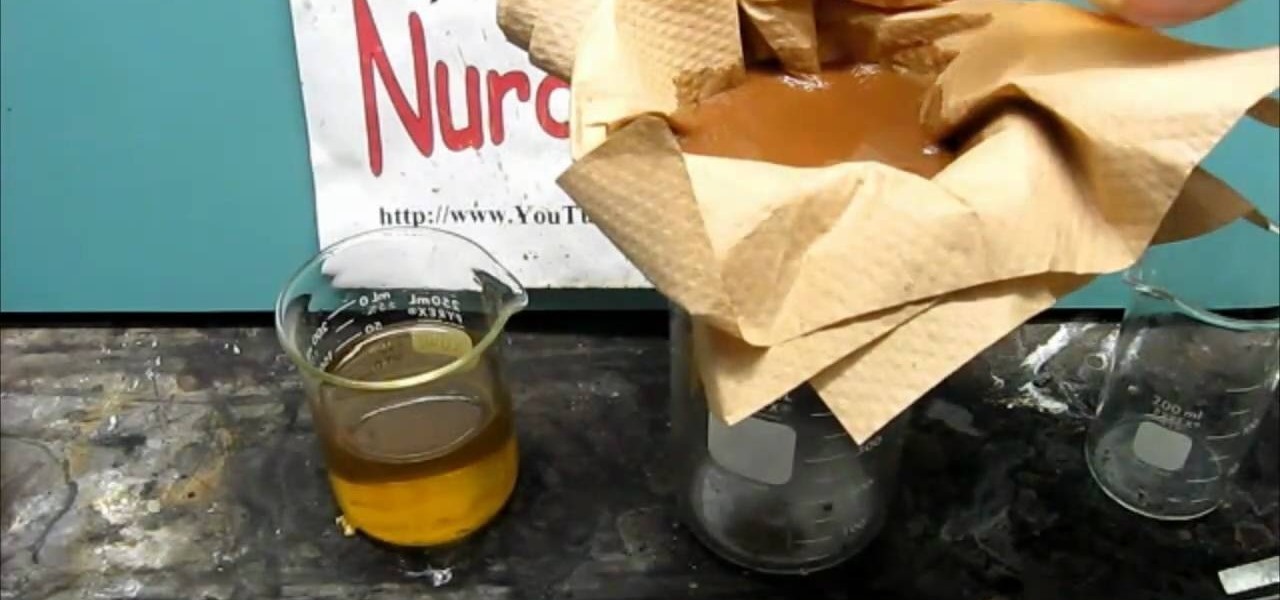
How To: Purify manganese sulfate contaminated by iron sulfate
In a previous video by NurdRage, he showed you how to make manganese sulfate ("How to make MnSO4 from MNO2 (two separate ways)"), but there can be situations where the iron in the precursor would carry over and contaminate the product. Recrystallization doesn't work for this high level of contamination, so a different approach is needed.

How To: Understand how helicopters work
Ever wonder how helicopters work? Gather a piece of paper, a ruler and a pair of scissors. Take the ruler and draw 3 lines of 10cms on a sheet of paper. Then place the ruler in the middle and draw 2 lines of 14cms in length. Then cut the lines with the scissors and fold the slides in the opposite direction. Get one paper clip and put it on the tail end of the helicopter. The flight of the helicopter depends upon the size of the wings. It will help you to learn the dynamics of a helicopter.

How To: Balance a chemical equation with ease
Learn how to balance the three different types of chemical equations in simple steps. First take an equation, write down its reactants and products and write down the names of all elements. Now write down how many of each element are present in the equation. Now check which element does not match, in this case the Oxygen doesn't match. Now multiply the element or compound starting at two but now hydrogen doesn't match. Try to match them by multiplying the coefficients but now sulfur doesn't m...

How To: Examine a patient's lymph nodes
This quick video tutorial will show you how to examine a patient's lymph nodes. Lymph nodes are found in certain areas of the body. The examination is usually done with the doctor standing behinds the patient. There are lymph nodes under the jaw, behind the ears, etc. If you need to examine the armpit lymph nodes, do it by standing in front of the patient. Check for any swelling.
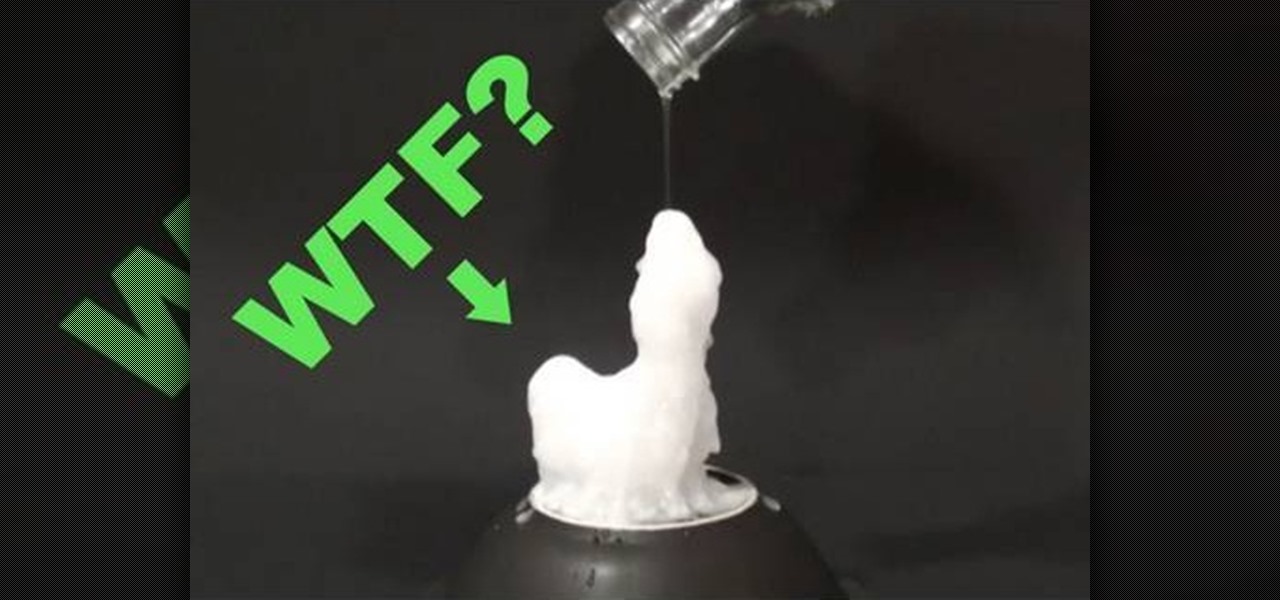
How To: Make liquid sculptures from a handwarmer
Learn how to make liquid sculptures from a hand warmer in simple steps. First buy an instant reusable hand warmer which has sodium acetate in it and keep it ready. Now use 4 packets of the hand warmer and stir them out with water. Transfer them to a bottle and keep it aside. Take a sodium acetate crystal from a used hand warmer and place it in a plate. Now pour the liquid slowly on the crystal and you can see the liquid turns solid as you pour it. Design your masterpiece using all the liquid....
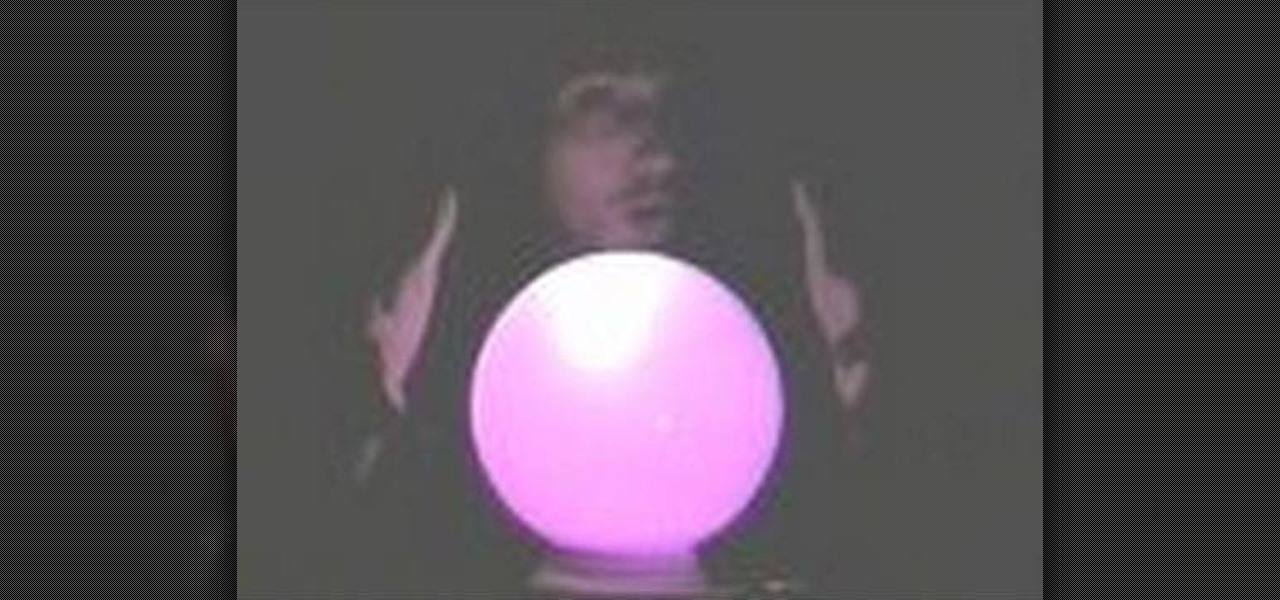
How To: Demystify fortune tellers
In this video from Socoolscienceshow Crazy Chris shows us how phony fortune tellers make it seem like they are predicting the future. He uses a crystal ball in this demonstration. He says that anyone can pretend to predict someone's future just by spouting out some common future predictions such as in "3 to 7 days you will have a disagreement with a loved one, 4 to 6 months you'll find a new love, and 2 to 5 years you'll change your career." Fortune telling is completely fake and Crazy Chris ...
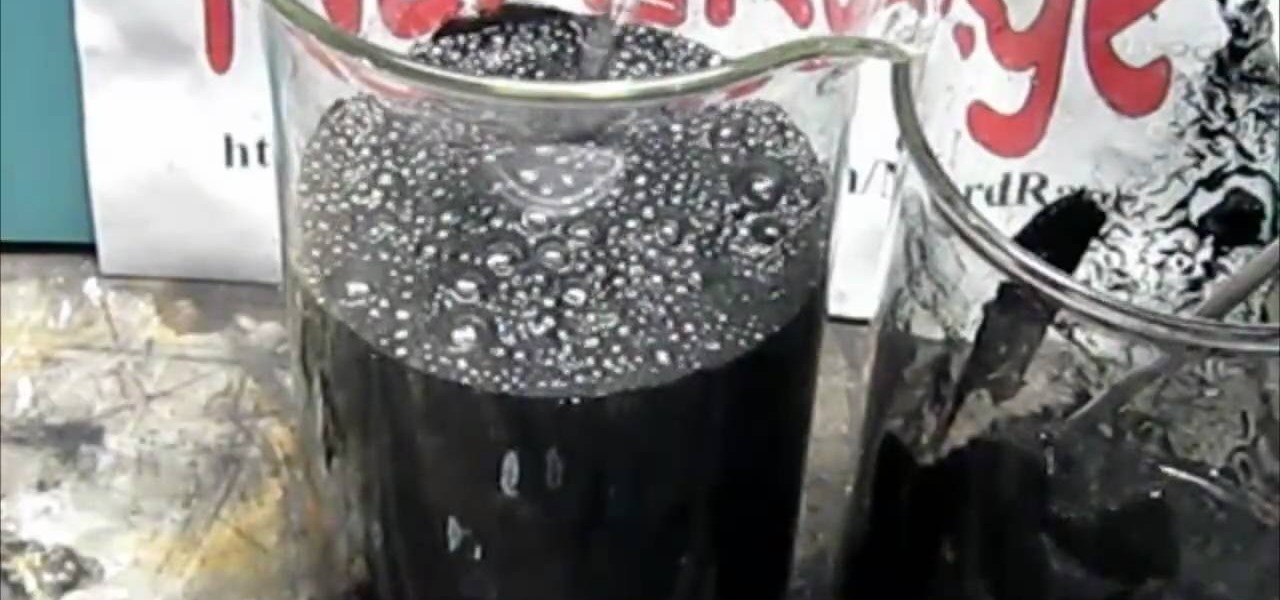
How To: Make MnSO4 from MNO2 (two separate ways)
What is MnSO4 and MNO2, anyway? They are they molecular formula for Manganese Sulfate and Manganese Dioxide. And you can make one from the other. But how?
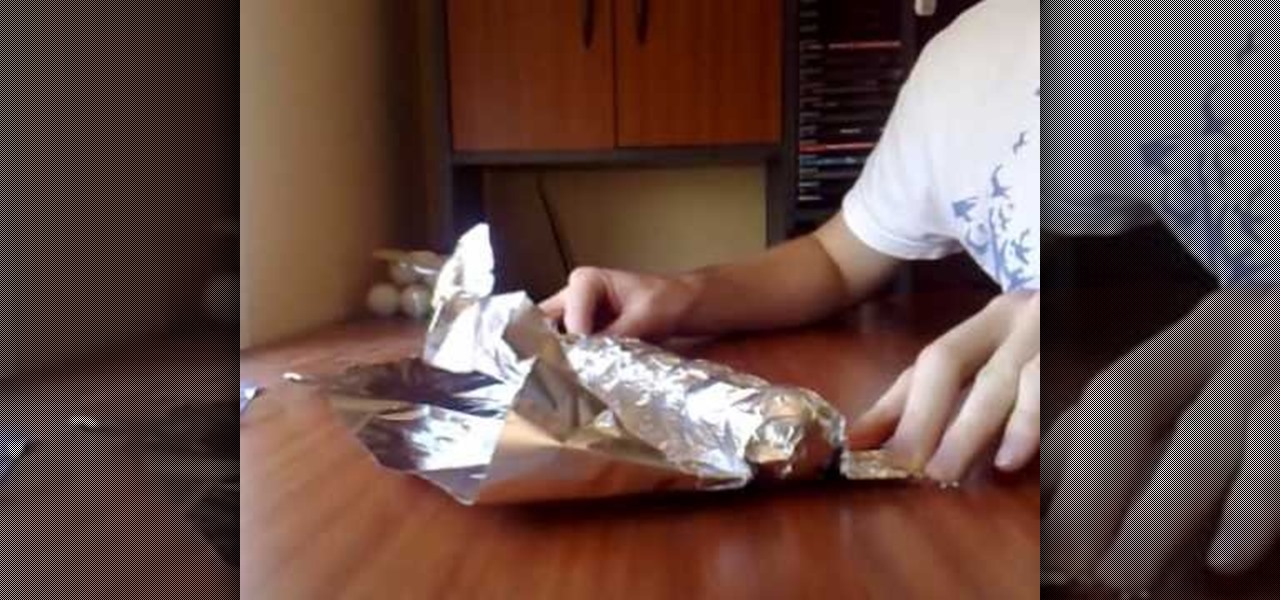
How To: Make a long ping pong smoke bomb
In this little video tutorial, Bryce shows us what it takes to make a smoke bomb using not one or two ping pong balls, but six! All you need is six ping pong balls (of course), foil, scissors, a lighter, and some patience.

How To: Understand the Cambrian Explosion
This energetic video shows what the Cambrian Explosion is and when it occurred in relation to a 24 hour clock that represents Earth's life. The Cambrian Explosion was a huge increase in multicellular life forms that occurred about 542 million years ago. The video then demonstrates how the Cambrian Explosion was only a small part of the history of life on Earth. It goes through the major developments of life on Earth and shows how it relates to a 24 hour period. This video is a tool in underst...
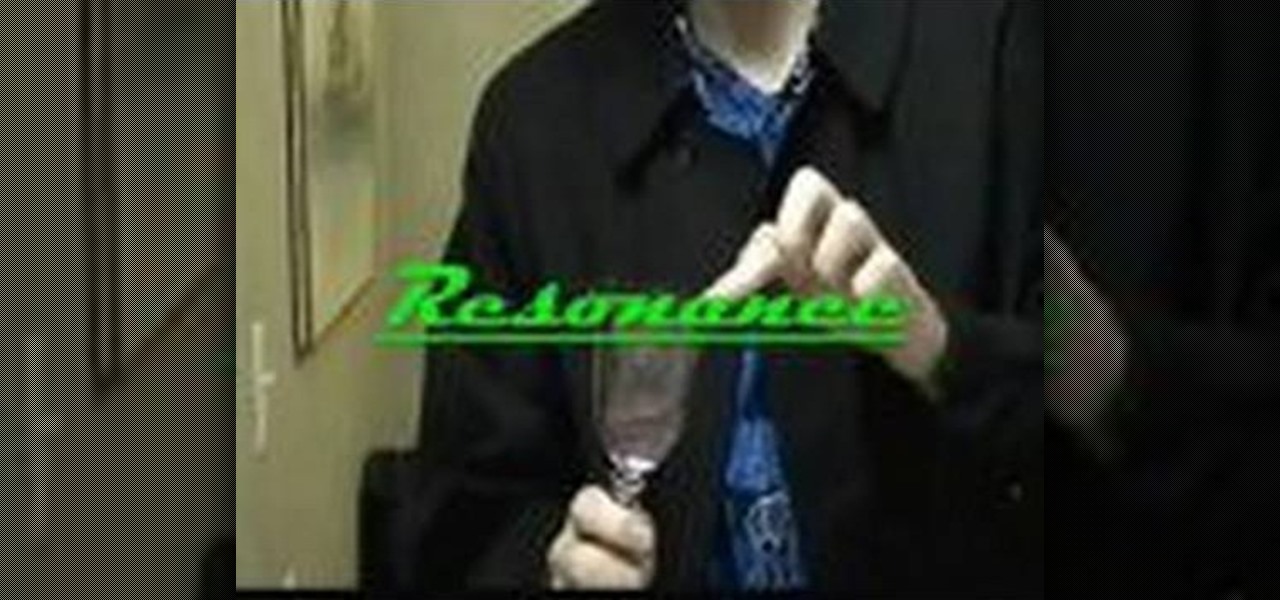
How To: Understand resonant frequencies
In this video tutorial the instructor demonstrates resonant frequency. In this video the instructor shows the sound of resonance and how to generate it. Resonance is a forced vibration of energy into molecules of an object that makes those molecules vibrate at their resonant frequency. When these molecules vibrate naturally they produce a kind of noise that can be annoying some times. In this video the author makes a small object using a rubber band and a net that produces vibrations when rot...

How To: Understand how sodium nitrate burns
Ever wondered how science could turn out to be fun? Here's how: take a piece of paper with a mixture of sodium nitrate and sugar. When heated, sodium nitrate releases oxygen and burns sugar. Sugar alone cannot burn fast. If you want faster results, then take sodium nitrate with sulphur and some reactive metals. Add some coal to it for a faster result. This will help you burn some useless pile in quick time.
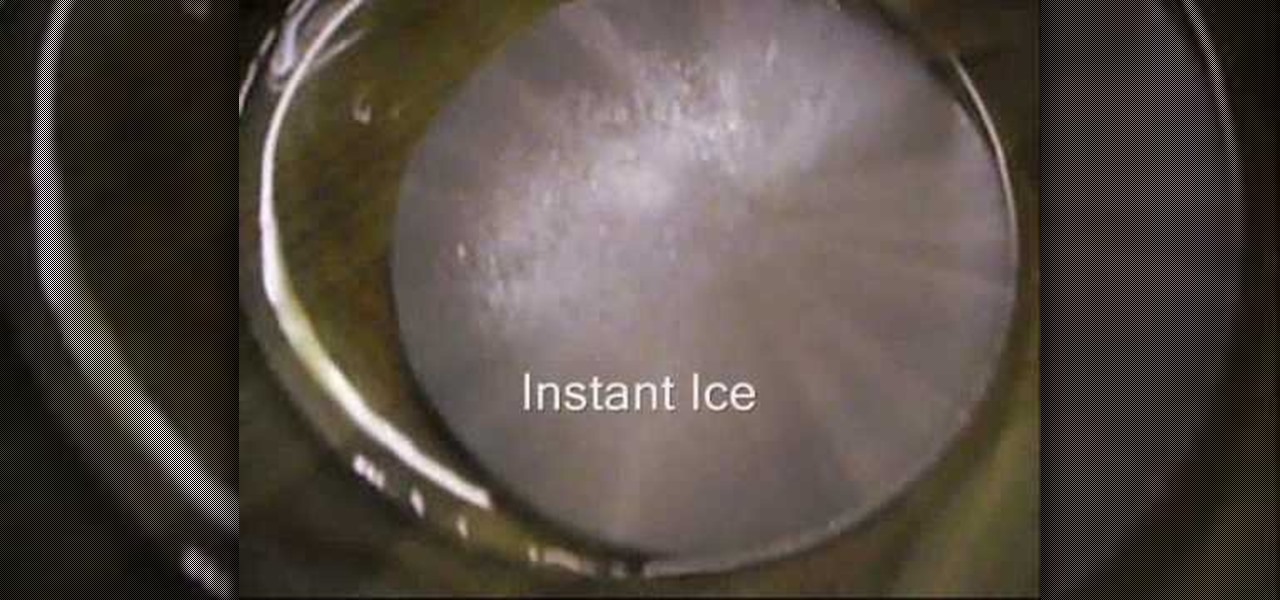
How To: Make simple and fun "hot ice" at home with vinegar
Hot ice is a very cool experiment. This is a recipe for homemade 'hot ice' that mimicks the sodium acetate one but only requires simple ingredients!
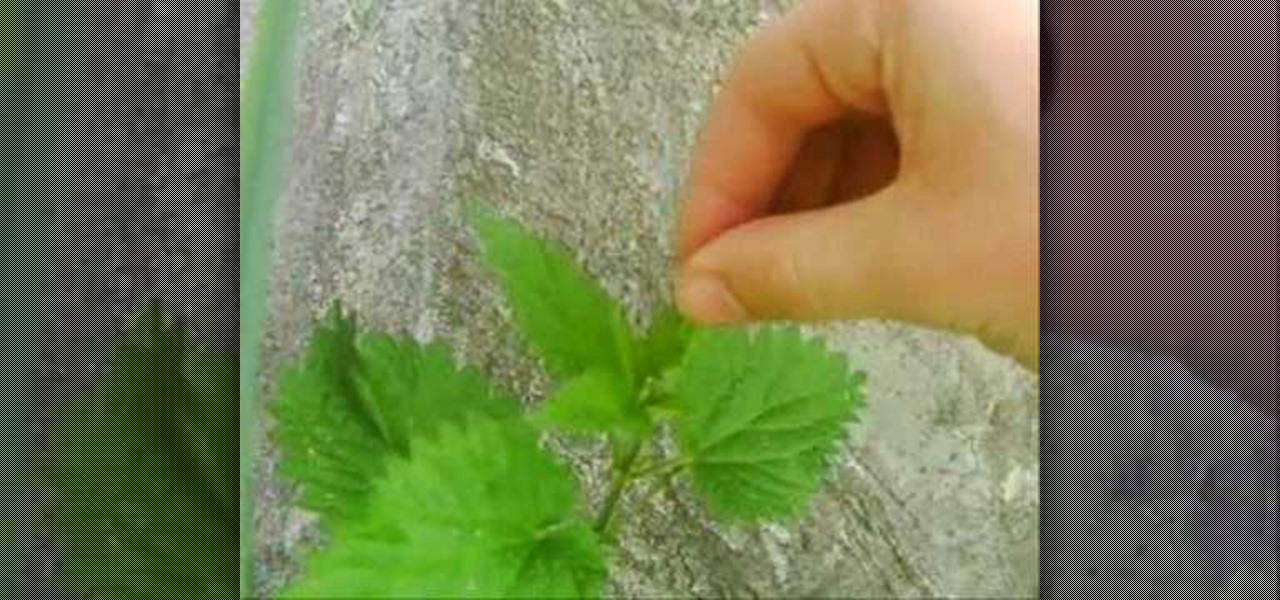
How To: Eat stinging nettles without stinging yourself
If you like to eat stinging nettles, there is actually a way to do it without stinging yourself, and this video will show you a very simple trick. Take the leaf between your thumb and forefinger and stroke it away from the stem of the plant a few times, then tear the leaf off. Roll it between your thumb and finger so it forms a cylindrical shape, pop it in your mouth and eat it. It tastes good and you don't get stung. If you've ever been curious about eating stinging nettles, this is the plac...
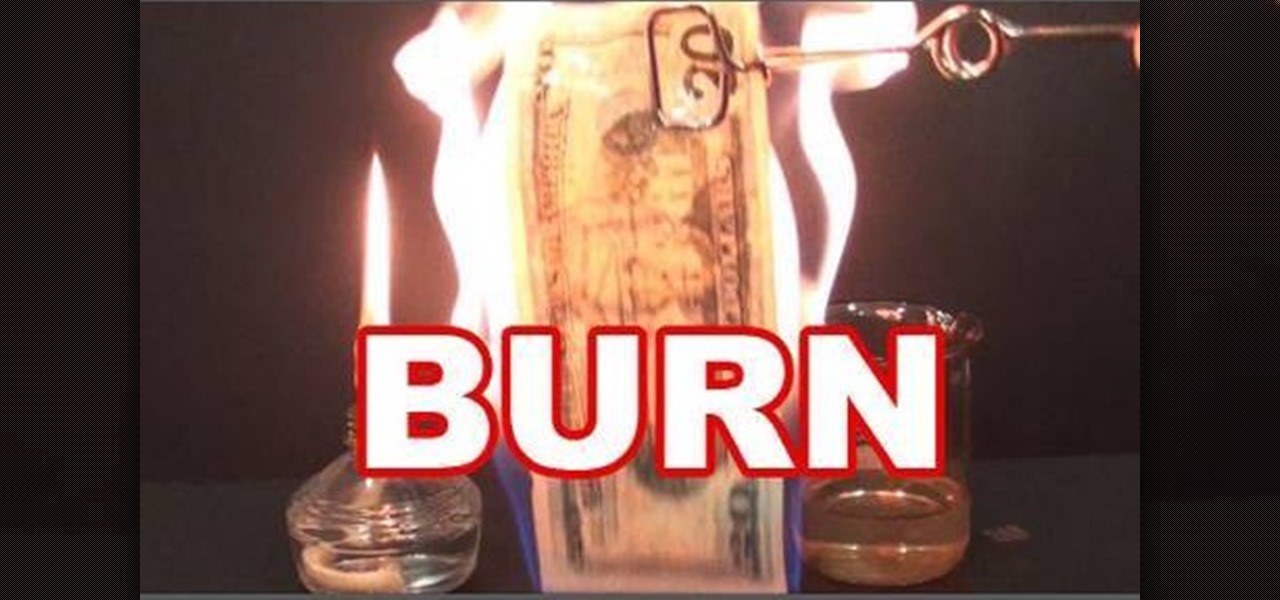
How To: Burn money without damaging it
Evil Dylan takes a twenty dollar bill and sets it on fire, but does not damage the money at all. Materials necessary for this experiment are distilled water, alcohol and a twenty dollar bill. He measures 45ml of distilled water into a measuring cup and then tops it off at 100ml with the alcohol. He then puts the twenty dollar bill into the mixture and soaks it for a while making sure that the bill is totally immersed. Then he sets it on fire and even though the fire burns, the bill is not dam...

How To: Burn mercury thiocyanide, "the rock from Mars"
Students show how mercury thiocyanide or "rock from mars" burns. First and foremost, make sure you are outdoors and with a considerably large space. Spread a non-flammable material over the space you decide to work on and place a small fragment of the mercury thiocyanide in the center. Keeping a respectable distance from the "rock" touch the "rock" with a lighted match. Watch as a substance oozes out from the rock. Make sure that the process has ended or that no movement can be seen from the ...
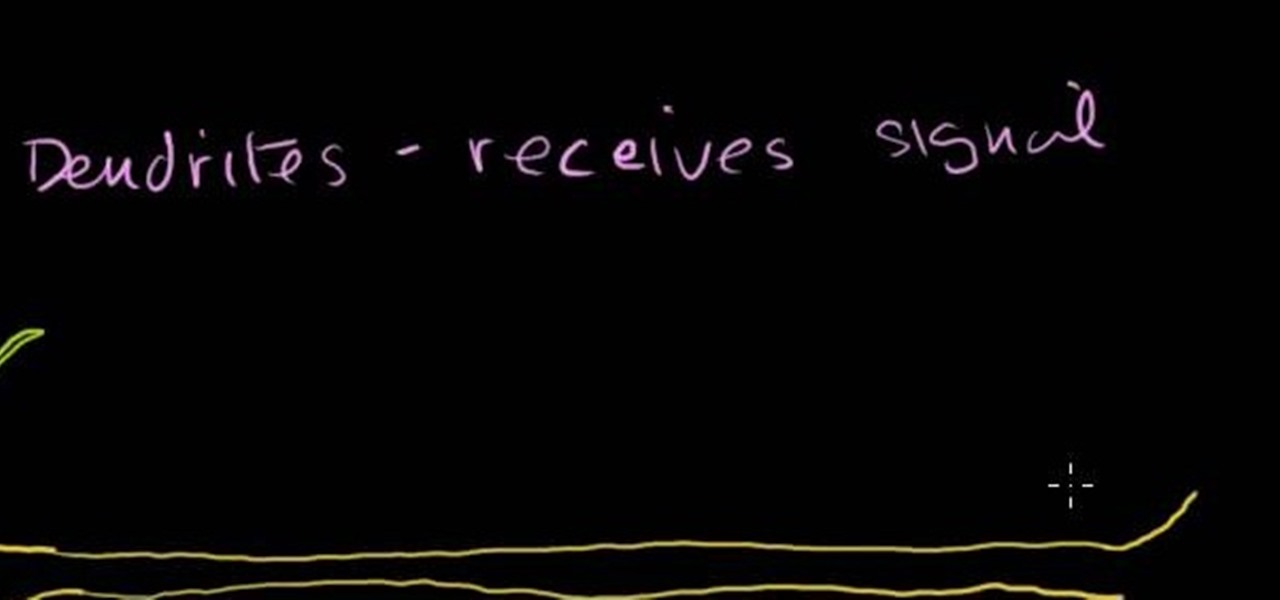
How To: Understand the anatomy of a neuron
The speaker starts out by peaking the viewer's interest in the importance of a neuron. Using a diagram, the speaker helps familiarize the viewer with the anatomy of a neuron. As he draws a diagram of the neuron, the instructor gives a detailed explanation of what the various parts of a neuron do and how each of the various parts interacts with other neurons. The speaker also explains how the neuron sends and receives signals throughout the body. The video is informative, very good quality and...

How To: Detect counterfeit money
Look at the money you are receiving. Carefully inspect it for any strange colors, marks, or texture. Do not assume that a different color, texture, or design is simply a mistake made at the treasury. The bills there are all made the same based on the denomination.
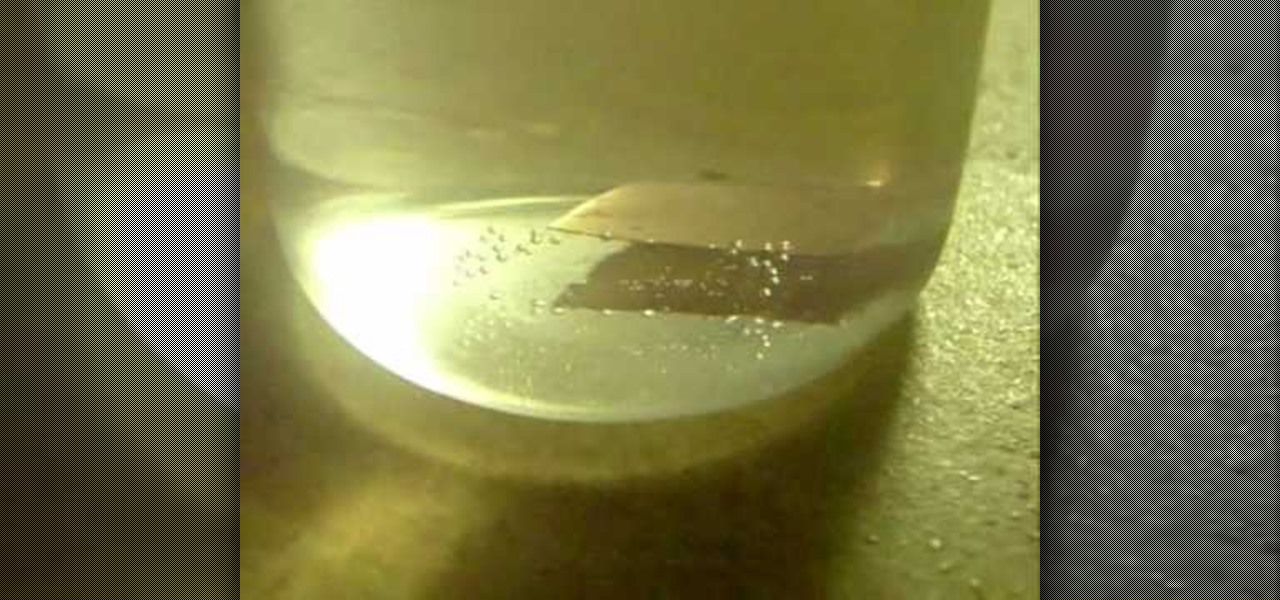
How To: Understand how metals react in hydrochloric acid
In this video tutorial the instructor talks about Hydrochloric acid (HCL) and how it reacts to a few metals. To try this out take 30 ml of concentrated hydrochloric acid in a beaker. You need to employ caution while handling acids, especially if you use strong ones. Now you can throw small pieces of different metals into it carefully to see how it reacts with different metals. For instance when this HCL comes in contact with metals various reaction take place depending up on the metal. Like i...
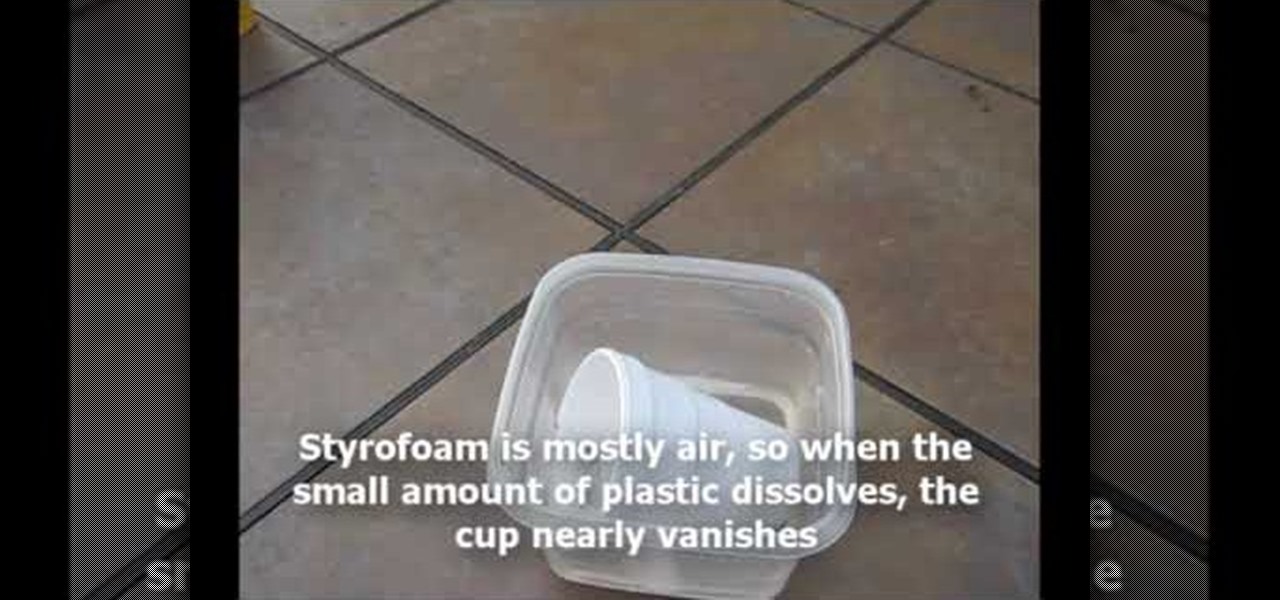
How To: Dissolve a styrofoam cup in acetone
Styropyro shows a classic demonstration of "The Vanishing Cup" experiment. Things you will need: a container, slightly larger than the Styrofoam cup, acetone and a Styrofoam cup. Place the container on a flat surface and fill it up with an acetone. Get the Styrofoam cup and Carefully place it inside the container. Watch the Styrofoam cup slowly shrinks as it touches the acetone. After a while. the Styrofoam cup turns into liquid form. Notice how much of the Styrofoam cup is left after it shri...
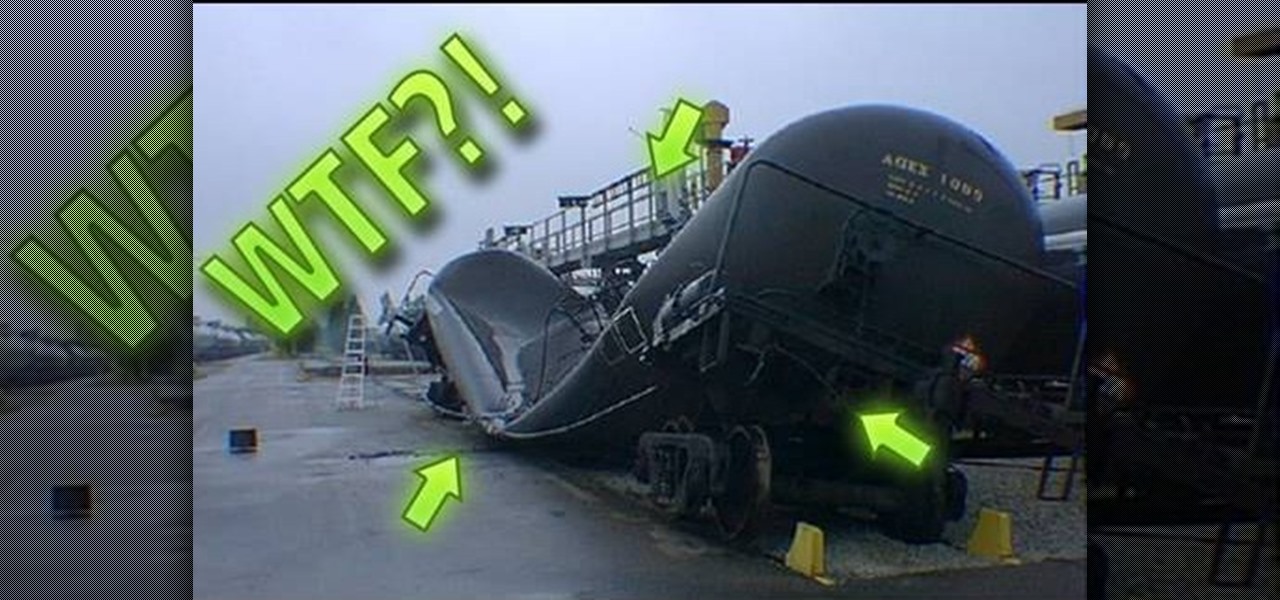
How To: Crush metal with ice water (and air pressure)
Air. It's all around us. Put it to work with this home science how-to, which demonstrates a cool method for crushing aluminum cans with a little bit of ice water and a whole lot of air pressure. To follow along with this experiment at home, you'll need a soda or paint can, a large bowl of water, some ice, and a stove top.

How To: Use gravimetric analysis to analyze sulfuric acid
This video is based on a chemistry experiment. This video is going to explain to us how to use gravimetric analysis in order to analyze sulfuric acid. This experiment should not be done for those who do not have a fundamental knowledge of chemical compounds, reactions and chemical safety. He explains first what he is about to do before he does it. Sulfuric acid is acidic and can be toxic if ingested or in contact with the eyes. Take extreme care with this experiment.
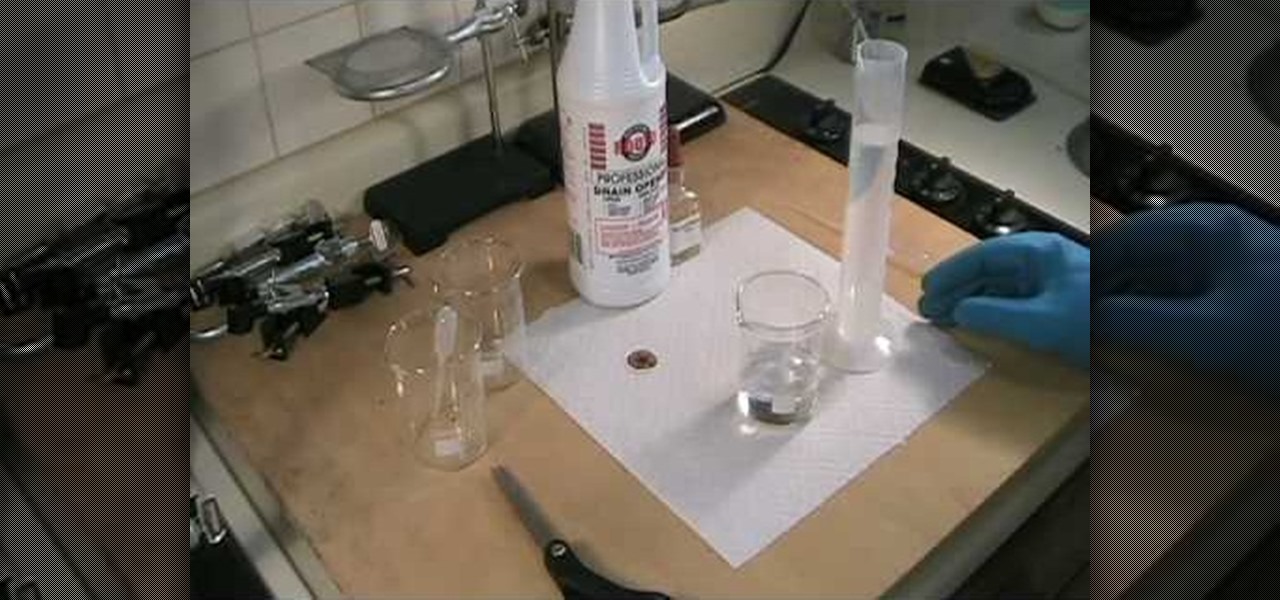
How To: Analyze cheap sulfuric acid for concentration & purity
In this home scientist video the instructor Robert Bruce talks about cheap sulfuric acid. He says that sulfuric acid is very important in any lab both as a reagent and a precursor for preparing other chemicals. He points to the battery acid saying that it is a good source of sulfuric acid which is 35% concentrated. Now he shows various methods to obtained sulfuric acid and shows how to test one of the thus obtained sulfuric acid for its concentration. In this video the author talks about sulf...
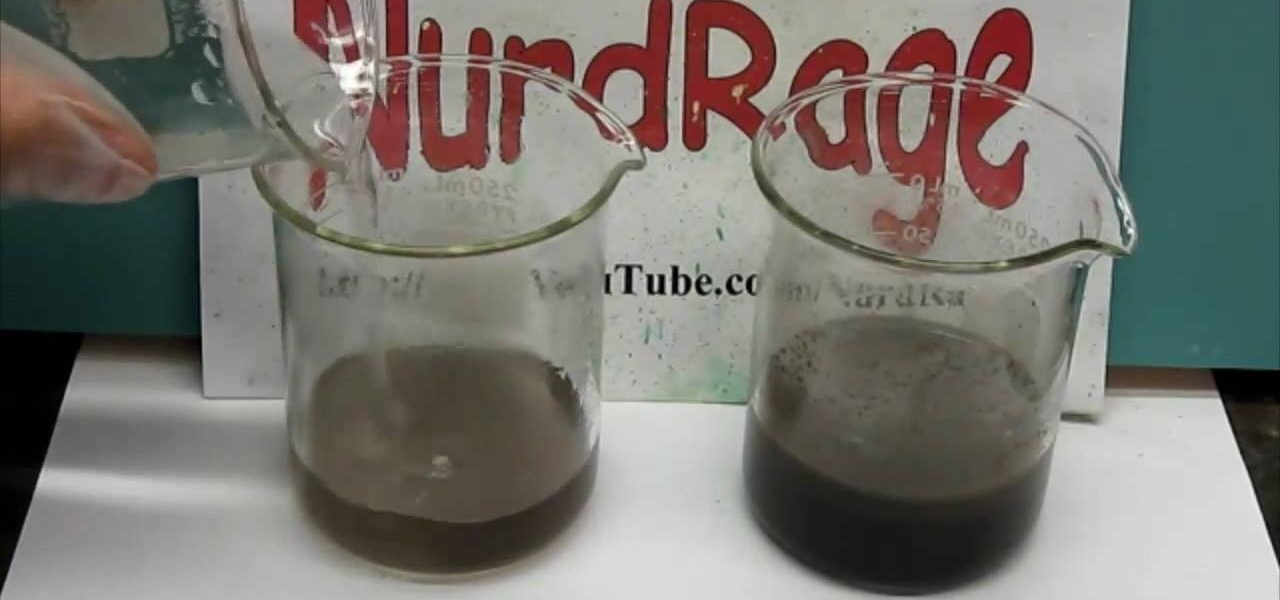
How To: Test manganese dioxide for purity (and sand)
This video speaks to everyone who has ever bought anything online, or in fact, anyone who has ever bought anything period. How do you know what you're getting is genuine? Is it a fake product? Is it stolen goods? Is it impure?
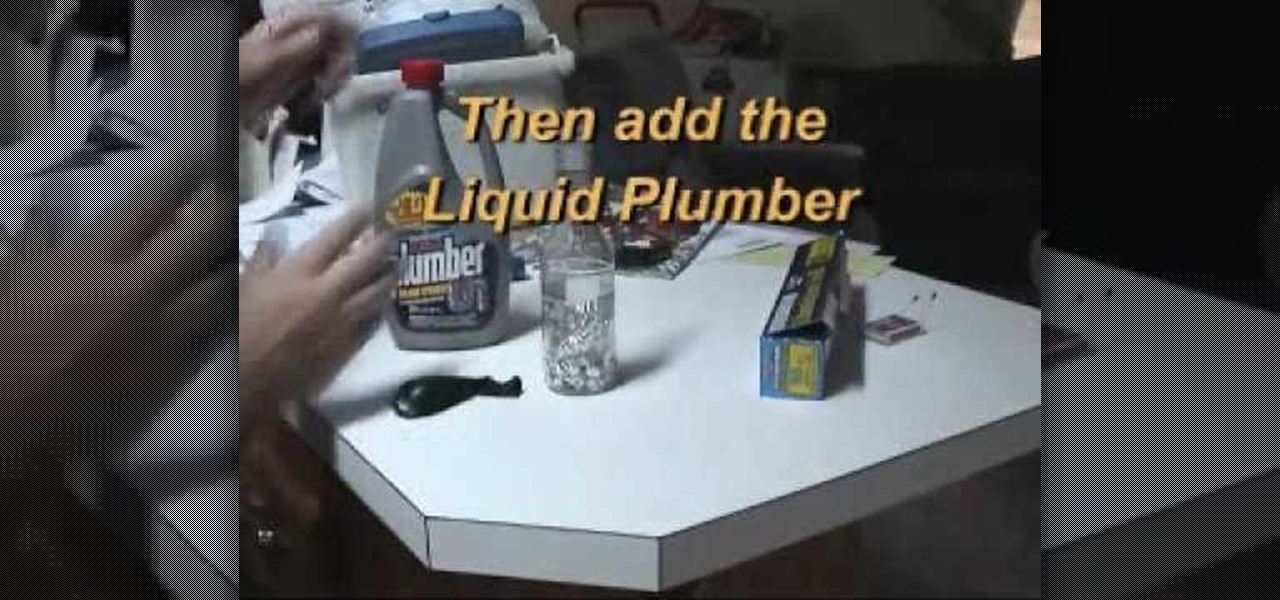
How To: Make hydrogen gas with foil and Liquid Plumr
Learn how to make hydrogen with some household chemicals and items. This experiment is dangerous, so please exercise caution. You will use Liquid Plumr for this science experiment, and be warned, Liquid Plumber and hydrogen are dangerous, maybe not the aluminum foil, but the chemicals, definitely. Fill a balloon with it and watch it explode with a close match.

How To: Use baby powder to reveal latent fingerprints
This short video shows us how to reveal latent fingerprints on a glass surface by dusting. Anyone interested in forensic science would enjoy trying it as it shows simple steps in dusting and lifting fingerprints. It does not require any chemicals and we can do it with baby powder. The steps involved are so simple and easy to follow that even kids can try it out for fun. This gives a clear idea about fingerprints on different objects like porous, non porous and metals. Enjoy viewing and detect...
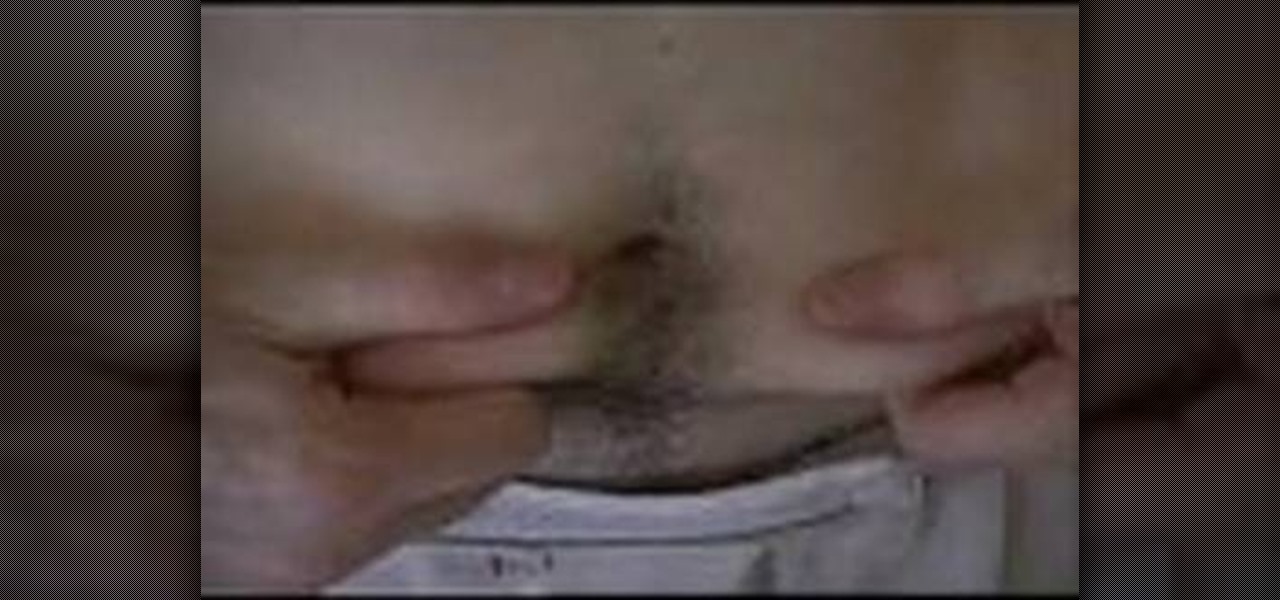
How To: Understand how body fat burning works
This is a comedic look at how body fat burning works according to our host Crazy Chris. This home video is edited together to give us some tips on how to burn fat in a pretty humorous way. Chris goes for a more goofing around and recreational approach to staying in shape rather than normal exercise. He recommends your favorite activity for 30 minutes twice a day. His happens to be swimming. Crazy Chris basically tells us to burn body fat you need to burn energy by playing sports and having fun!
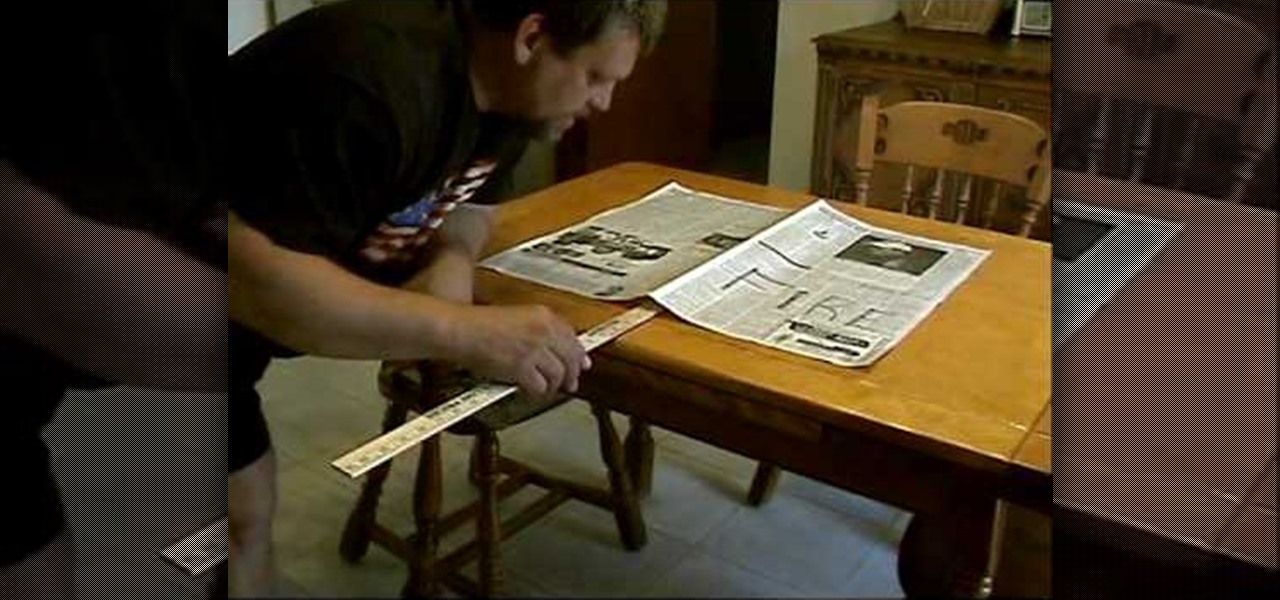
How To: Break a yardstick with atmospheric pressure
This video shows you how to break a yardstick with atmospheric pressure. The instructor first lays a ruler halfway on and off of a table. He then covers half the ruler with newspaper. The instructor states that you can chop the ruler in half with your hand because the air holding down the paper will keep the ruler in place. The experiment does work correctly and he did break it in half perfectly. This instructor seems to have many similar videos on the subject.

How To: Improve your memory using grouping techniques
This video describes how to improve one's memory by using a grouping technique. First you break up large chunks of information into smaller chunks and then you focus and concentrate on memorizing those smaller chunks one at a time. The video then describes how short term memory work on the anatomical level. This video is about four minutes long and will help you improve your short term memory. This video is great for those who are generally forgetful.
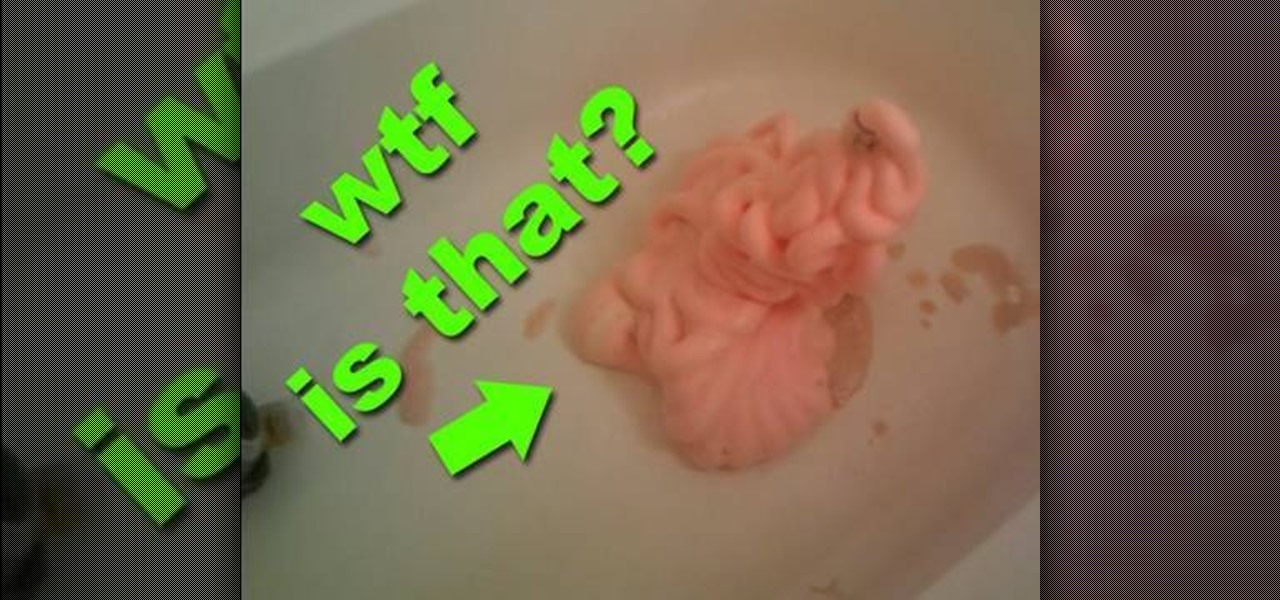
How To: Make a never ending foam snake
In this video the author shows how to make a never ending foam snake. He starts by speaking about how hydrogen peroxide can be fun. He starts with the requirements first which are a dish soap, a bottle of hydrogen peroxide, some dry yeast, and a red fruit color. Now he fills up a cup with hydrogen peroxide, adds the color and two table spoons of dish soap. Now he shows how to use yeast which is used to remove the oxygen from the hydrogen peroxide. And finally he demonstrates the never ending ...
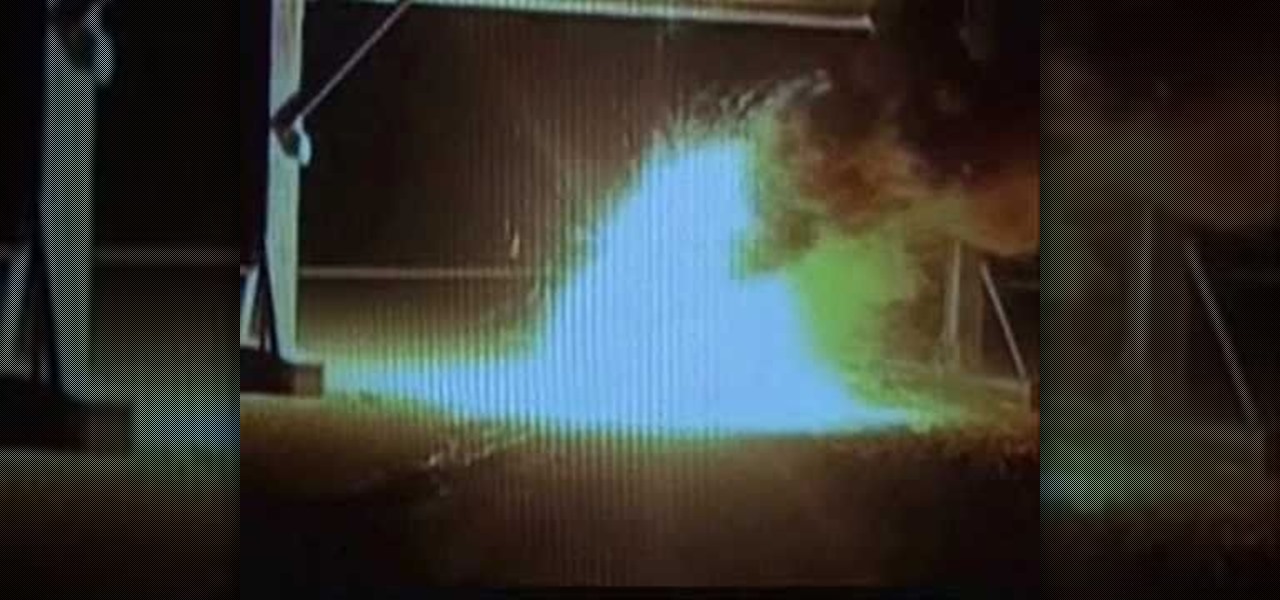
How To: Create a thermite reaction
Obtain finely powdered iron oxide (rust), aluminum, and a thin strip of magnesium. Mix them together in a 8:3 ratio (iron oxide: aluminum) in a ratio by weight. [Note that the since aluminum is so light, it will appear that it is about a 50-50 mix by volume].
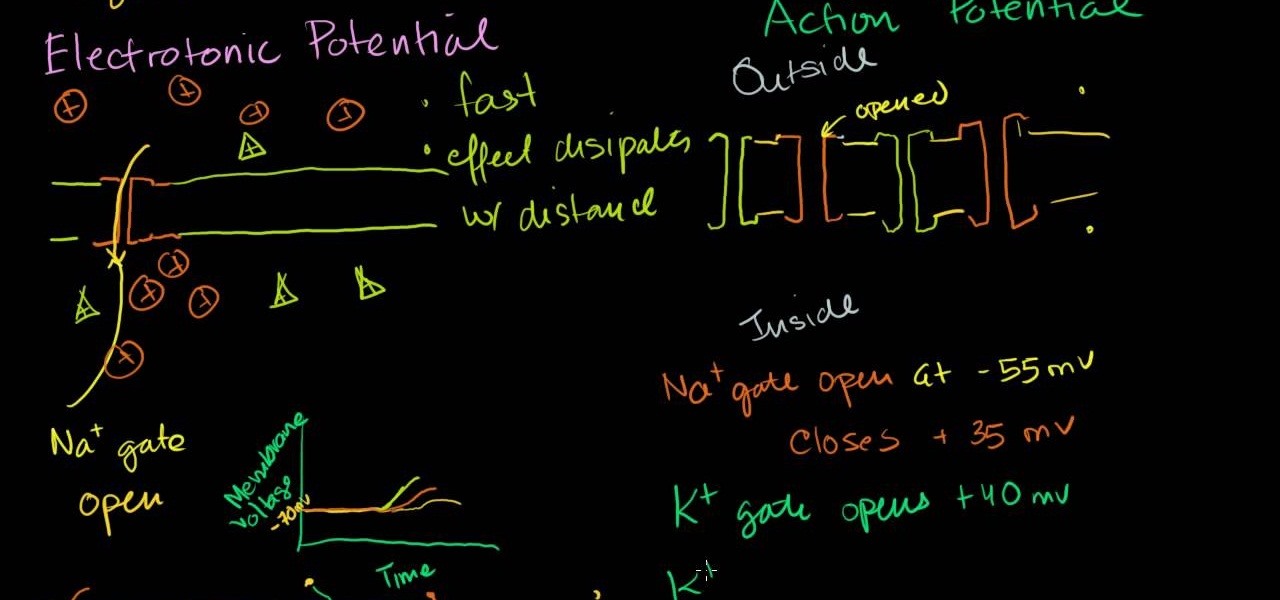
How To: Understand electrotonic & action potentials in a cell
Maybe you learn best by seeing things worked out in front of you and what you just saw in class today about Electronic action potential of neurons didn't quite sink in. Not to mention the test that you have coming up this week is going to be an in-depth analysis of your knowledge on this material. Let Khanacademy be your guide! For less than half the time it takes to sit through the Professors class, he explains the function of Neurons, how action potential works and sends you on your way to ...
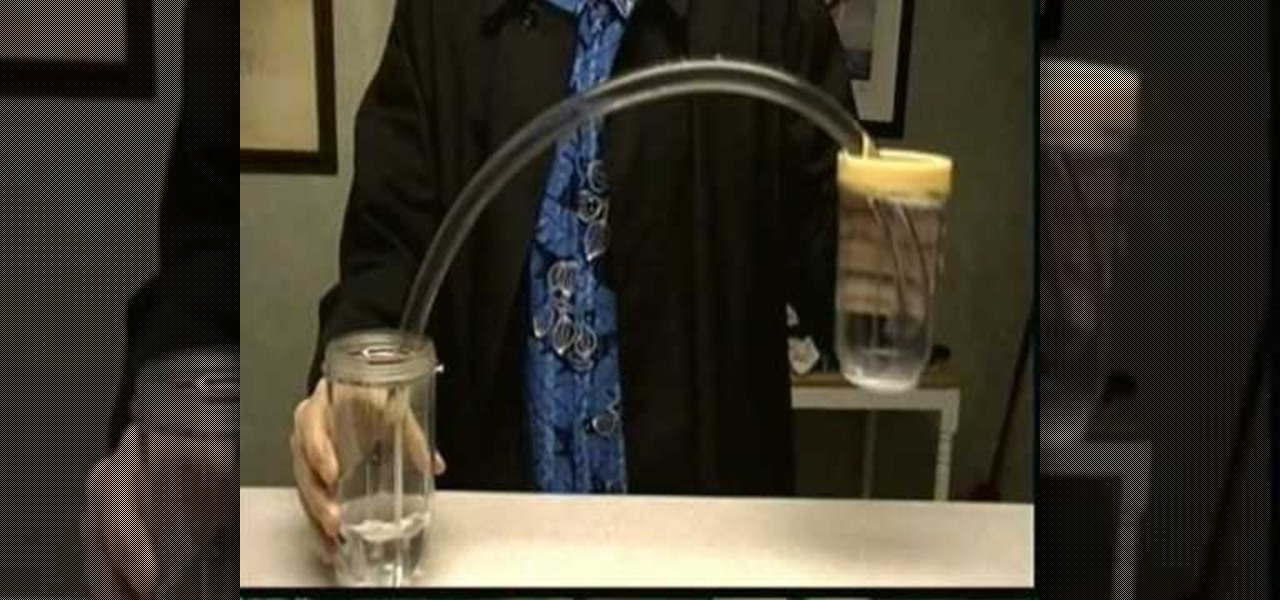
How To: Experiment with hydrostatic pressure
This how-to video explains the hydrostatic pressure.

How To: Create a cloud in a clear container
Do Try This at Home brings us video on how to create a cloud in a container. With just a few simple items household items we can create a cloud. He explains to us the science behind what he is doing and why is works the way it does. After that he demonstrates how to create the cloud with quite amazing results. He easily has created a cloud and suggests that we try this at home because it much easier to see and enjoy in person.
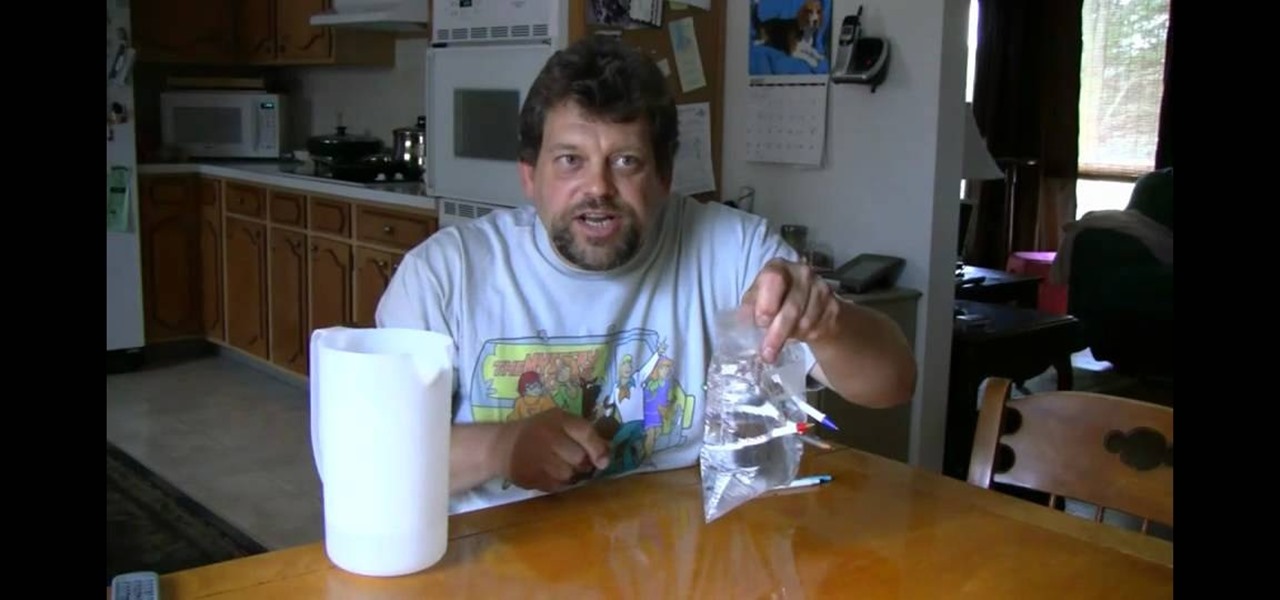
How To: Poke holes in a bag of water while staying dry
This demonstrates the difference between hard polymers and soft polymers. The bag does not leak water as it molds to the softer polymer of the bag. If the pen had poked a harder polymer, most likely, there would have been leaking from the holes. This demonstrates characteristics of water, and how polymers can work. This also shows how certain leaks can be stopped.
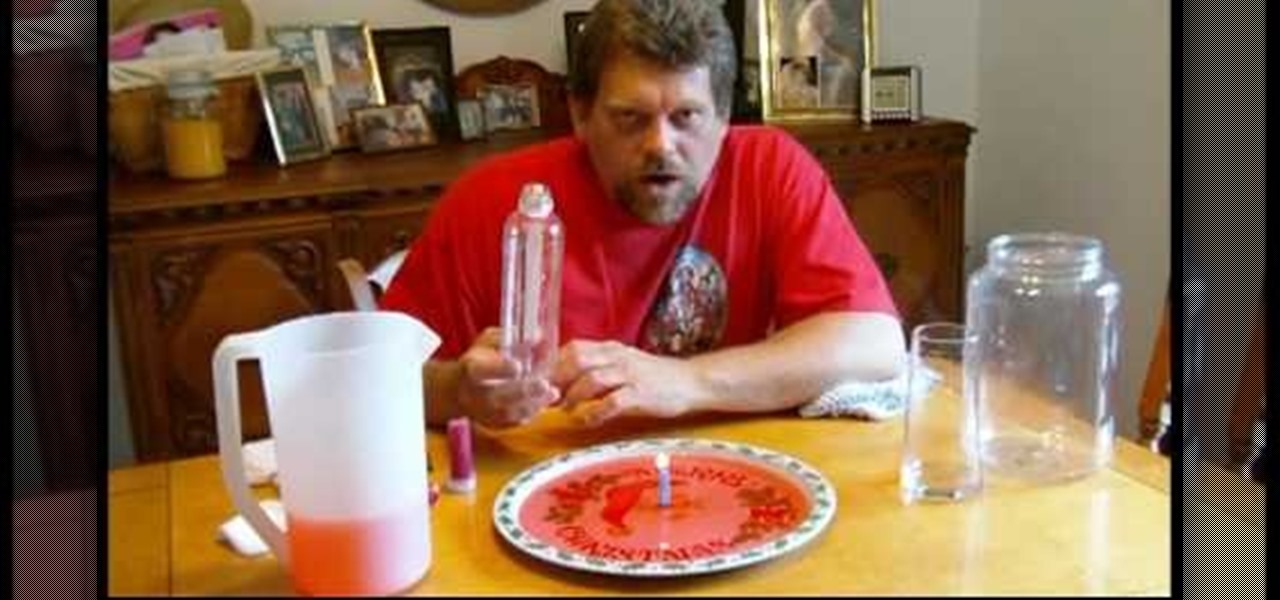
How To: Pull water into a upside down container with a candle
This is an exciting video for kids of all ages! Do you know what atmospheric pressure is? You will after watching this video. Know any fancy names for water? You will after viewing this fascinating experiment. Mr. G gives you a list a supplies you will need and then he shows you how to do the experiment. The supplies are easy to obtain. You will need a lighter or matches, so adult supervision is required, but the experiment is easy to do.
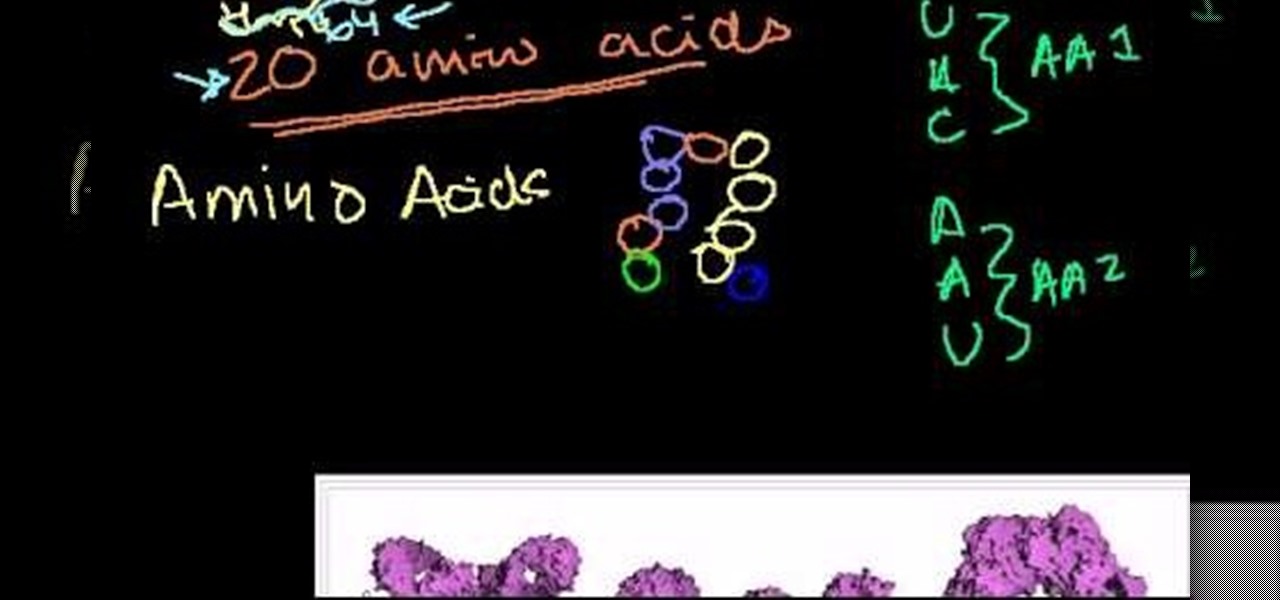
How To: Understand DNA
This video shows the details of DNA in the process of understanding their functions. The video is simple and easy to understand. The video starts with the description of the basic structure of DNA. It describes the various components of DNA. The video describes the base pairs that make up the DNA. The video describes the way these structures help to make up the human beings. The description in this video is very candid. The video describes the role of DNA in making the proteins.
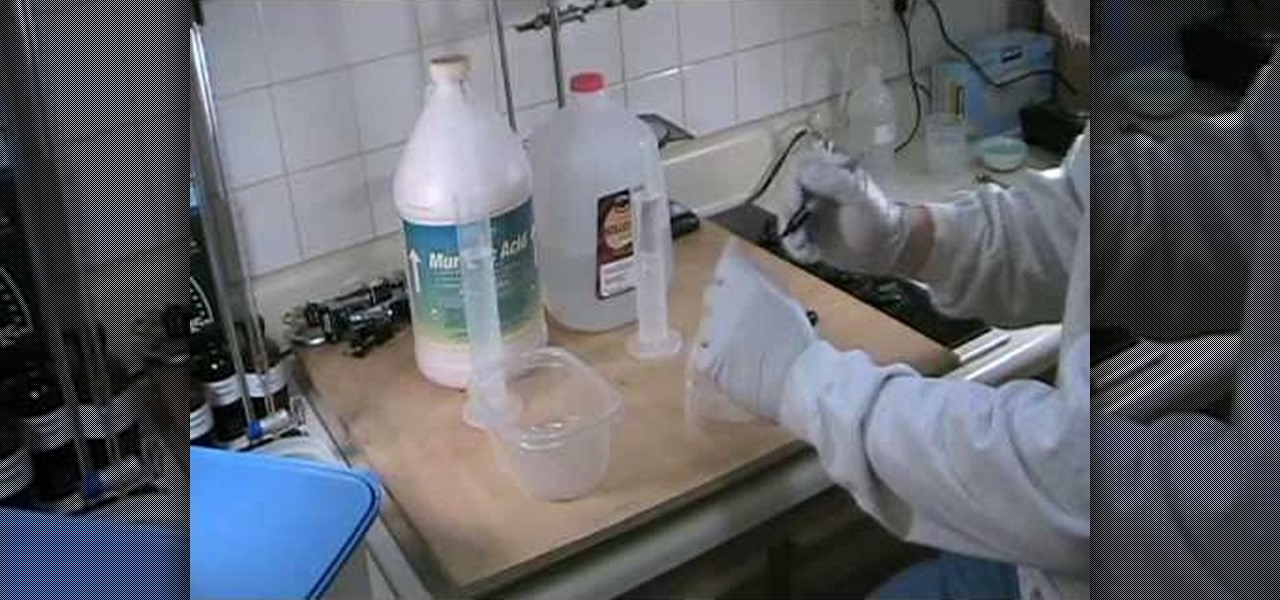
How To: Purify hydrochloric acid
This video topic was changed. It is now converting muriatic acid to reagent grade hydrochloric acid, HCL).







